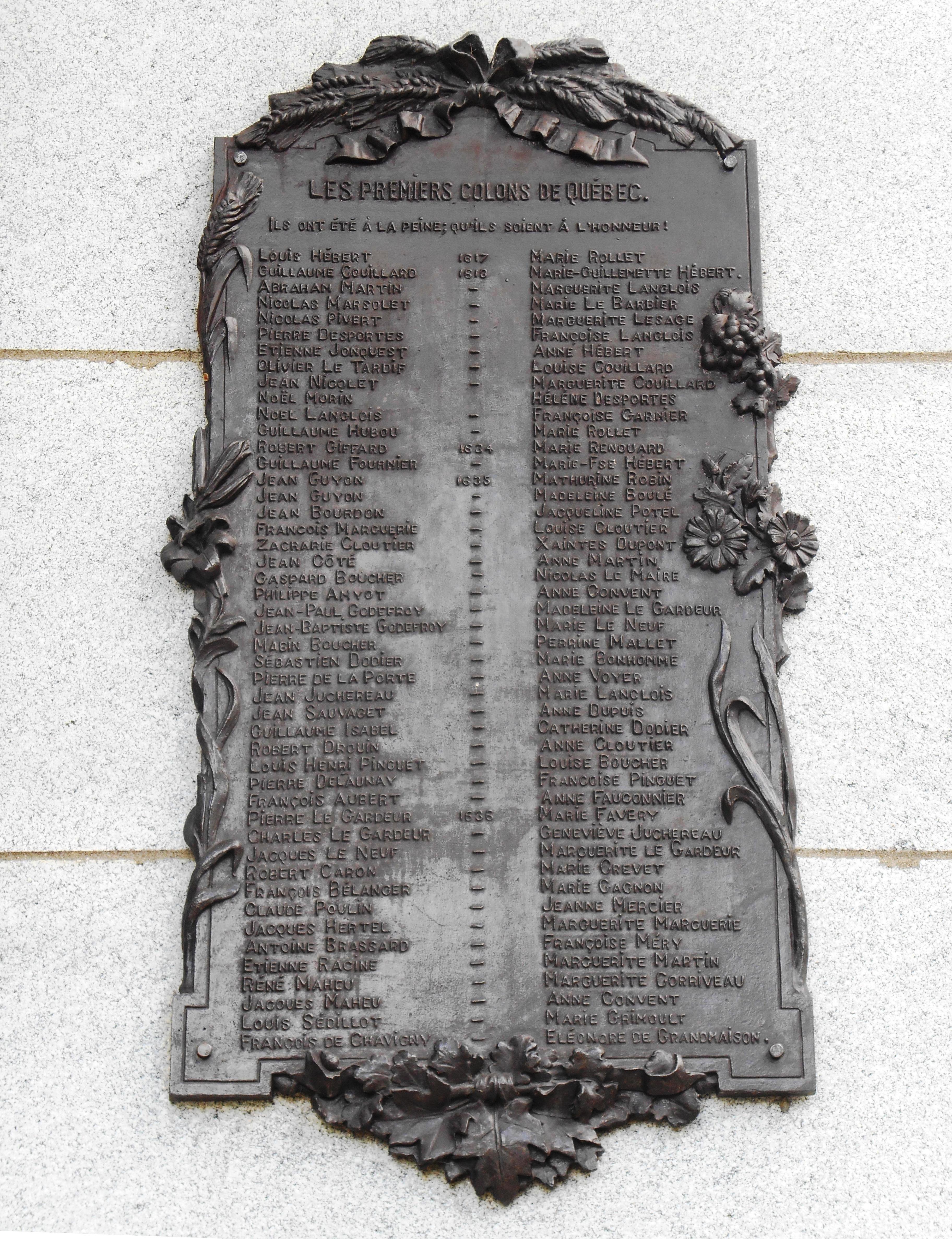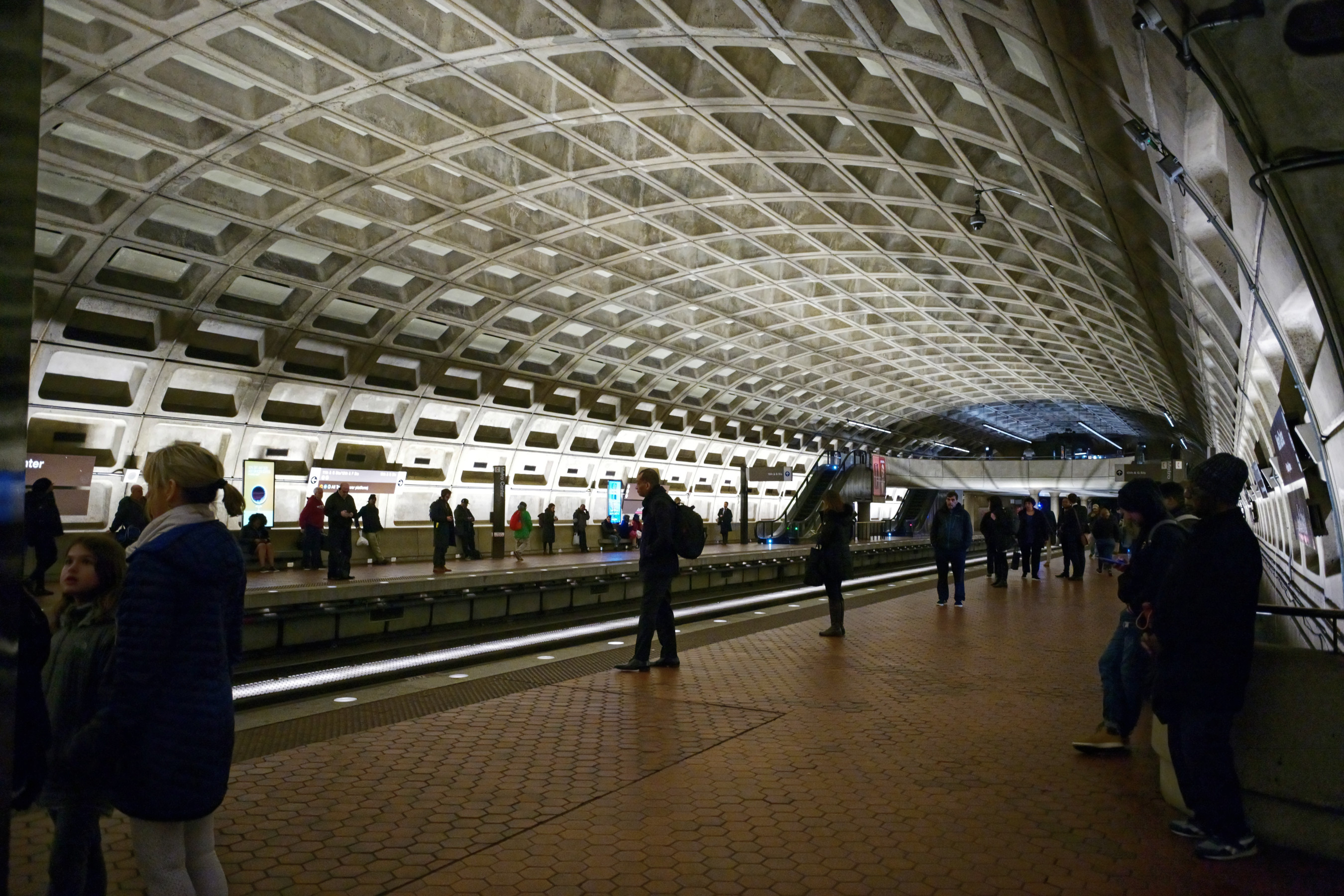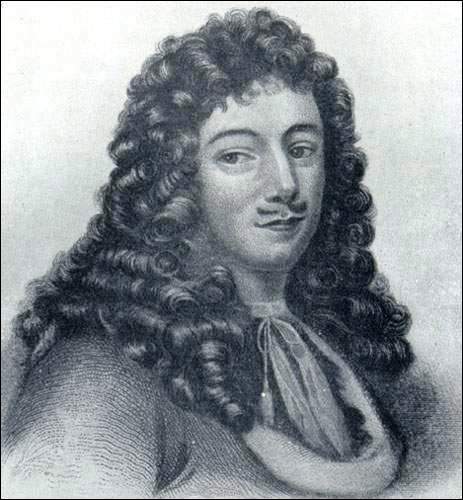|
Édifice Marie-Guyart
The Édifice Marie-Guyart, previously and still commonly known as Complexe G, is a 33-storey, office skyscraper completed in 1972 in Quebec City, Quebec, Canada. The brutalist style tower is the tallest building in the city, as well as the tallest building in Canada east of Montreal. Situated in the Parliament Hill borough, the building houses most notably the Ministry of Education, Recreation and Sports, the Ministry of Sustainable Development, Environment and Parks, as well the Observatoire de la Capitale observation deck. History During the 1960s, as a result of the Quiet Revolution, the Government of Quebec undertook a period of rapid expansion, resulting in a greater need for office space in the downtown area. In 1961, the "Commission d'aménagment de Québec" (Quebec Planning Commission) was formed and in 1963 the Commission produced an ambitious plan for the area surrounding the Hôtel du Parlement. The different buildings outlined in the plan were identified by lette ... [...More Info...] [...Related Items...] OR: [Wikipedia] [Google] [Baidu] |
Quebec City
Quebec City is the capital city of the Provinces and territories of Canada, Canadian province of Quebec. As of July 2021, the city had a population of 549,459, and the Census Metropolitan Area (including surrounding communities) had a population of 839,311. It is the twelfthList of the largest municipalities in Canada by population, -largest city and the seventh-List of census metropolitan areas and agglomerations in Canada, largest metropolitan area in Canada. It is also the List of towns in Quebec, second-largest city in the province, after Montreal. It has a humid continental climate with warm summers coupled with cold and snowy winters. Explorer Samuel de Champlain founded a French settlement here in 1608, and adopted the Algonquin name. Quebec City is one of the List of North American cities by year of foundation, oldest European settlements in North America. The Ramparts of Quebec City, ramparts surrounding Old Quebec () are the only fortified city walls remaining in the ... [...More Info...] [...Related Items...] OR: [Wikipedia] [Google] [Baidu] |
Grand Théâtre De Québec
The Grand Théâtre de Québec () is a performing arts complex in Quebec City, Quebec, Canada. It was conceived to commemorate the Canadian Centennial of 1967 and the Quebec Conference, 1864, one of the key meetings leading to the Canadian Confederation of 1867. Designed by Polish-Canadian architect Victor Prus, construction began in 1966 under Premier Jean Lesage but was stopped by the Union Nationale government of Daniel Johnson. Construction resumed in late 1967 but the theatre was not officially opened until January 16, 1971. The theatre has two venues: *Salle Louis Fréchette, with 1,885 seats, is named after the 19th-century French-Canadian writer Louis-Honoré Fréchette. *Salle Octave Crémazie, with 510 seats, is named after the 19th-century Canadian poet, Octave Crémazie, who was known as "the father of French-Canadian poetry". Since October 1972, the Conservatoire de musique du Québec à Québec has been located in the Grand Théâtre's complex. In 1991, the ... [...More Info...] [...Related Items...] OR: [Wikipedia] [Google] [Baidu] |
Office Buildings Completed In 1972
An office is a space where the employees of an organization perform administrative work in order to support and realize the various goals of the organization. The word "office" may also denote a position within an organization with specific duties attached to it (see officer or official); the latter is an earlier usage, as "office" originally referred to the location of one's duty. In its adjective form, the term "office" may refer to business-related tasks. In law, a company or organization has offices in any place where it has an official presence, even if that presence consists of a storage silo. For example, instead of a more traditional establishment with a desk and chair, an office is also an architectural and design phenomenon, including small offices, such as a bench in the corner of a small business or a room in someone's home (see small office/home office), entire floors of buildings, and massive buildings dedicated entirely to one company. In modern terms, an office i ... [...More Info...] [...Related Items...] OR: [Wikipedia] [Google] [Baidu] |
Brutalist Architecture In Canada
Brutalist architecture is an architectural style that emerged during the 1950s in the United Kingdom, among the reconstruction projects of the post-war era. Brutalist buildings are characterised by Minimalism (art), minimalist constructions that showcase the bare building materials and Structural engineering, structural elements over decorative design. The style commonly makes use of exposed, unpainted concrete or brick, angular geometric shapes and a predominantly monochrome colour palette; other materials, such as steel, timber, and glass, are also featured. Descended from Modernism, brutalism is said to be a reaction against the nostalgia of architecture in the 1940s. Derived from the Swedish phrase ''nybrutalism'', the term "new brutalism" was first used by British architects Alison and Peter Smithson for their pioneering approach to design. The style was further popularised in a 1955 essay by architectural critic Reyner Banham, who also associated the movement with the Fre ... [...More Info...] [...Related Items...] OR: [Wikipedia] [Google] [Baidu] |
Buildings And Structures In Quebec City
A building or edifice is an enclosed Structure#Load-bearing, structure with a roof, walls and window, windows, usually standing permanently in one place, such as a house or factory. Buildings come in a variety of sizes, shapes, and functions, and have been adapted throughout history for numerous factors, from building materials available, to weather conditions, land prices, ground conditions, specific uses, monument, prestige, and aesthetic reasons. To better understand the concept, see ''Nonbuilding structure'' for contrast. Buildings serve several societal needs – occupancy, primarily as shelter from weather, security, living space, privacy, to store belongings, and to comfortably live and work. A building as a shelter represents a physical separation of the :Human habitats, human habitat (a place of comfort and safety) from the ''outside'' (a place that may be harsh and harmful at times). buildings have been objects or canvasses of much architecture, artistic expression. ... [...More Info...] [...Related Items...] OR: [Wikipedia] [Google] [Baidu] |
Édifice André-Laurendeau
Édifice André-Laurendeau () is an eleven-storey office tower located at 1050, rue des Parlementaires in Quebec City, Quebec. The Beaux-Arts structure was built between 1935 and 1937, designed by Lacroix, Drouin and Bergeron, and is the property of the Crown in Right of Quebec. In 1980, it was named in honour of journalist and politician André Laurendeau. Office of the Lieutenant Governor of Quebec After the fire at Bois de Coulonge in 1966, the office of the lieutenant governor of Quebec was moved to a suite of reception rooms, offices, and support facilities in the Édifice André-Laurendeau. The viceregal suite is the site of swearing-in ceremonies for Cabinet ministers and the granting of royal assent, and where the lieutenant governor receives his or her premier. Whenever the Canadian sovereign and/or other members of the royal family A royal family is the immediate family of monarchs and sometimes their extended family. The term imperial family appropriately ... [...More Info...] [...Related Items...] OR: [Wikipedia] [Google] [Baidu] |
List Of Tallest Buildings In Quebec City
This list of tallest buildings in Quebec City ranks high-rise buildings in the city by height. Quebec City is the capital and second largest city in Quebec, with a population of 531,902. The history of skyscrapers in Quebec City began with the completion of the tall Édifice Price in 1930. Most of the city's skyscrapers were built between the late 1960s and early 1980s, including the tallest building in the city, the tall Édifice Marie-Guyart, which was built in 1972. Château Frontenac was the tallest building in the province of Quebec from the completion of its tallest tower in 1924 to the completion of Montreal's Royal Bank Tower (Montreal), Royal Bank Tower in 1928. In recent years, Quebec City has built a sizeable number of residential high-rises, though significantly less than other cities in Canada. As of June 2025, a 23-storey condo tower named “SWL” is under construction in the neighbourhood of Sainte-Foy. History Quebec City's first proper high-rise, the Price Bui ... [...More Info...] [...Related Items...] OR: [Wikipedia] [Google] [Baidu] |
Château Frontenac
The Fairmont Le Château Frontenac, commonly referred to as the Château Frontenac (), is a historic hotel in Quebec City, Quebec, Canada. The hotel is situated in Old Quebec, within the historic district's Upper Town, on the southern side of Place d'Armes. The Château Frontenac was designed by Bruce Price, and was built by the Canadian Pacific Railway company. The hotel is managed by Fairmont Hotels and Resorts. Opened in 1893, the Châteauesque-styled building has 18 floors; its height is augmented by its ground elevation. It was one of the first of Canada's grand railway hotels, and was designated a National Historic Site of Canada in 1981. The hotel was expanded on three occasions, with the last major expansion taking place in 1993. Location The Château Frontenac is situated on 1, rue des Carrières, at the eastern edge of Old Quebec's Upper Town, built on the promontory of Quebec, a raised mass of land that projects into the Saint Lawrence River. The hotel property ... [...More Info...] [...Related Items...] OR: [Wikipedia] [Google] [Baidu] |
Citadelle De Québec
The Citadelle of Quebec (), also known as , is an active military installation and the secondary official residence of the governor general of Canada. It is atop Cap Diamant, adjoining the Plains of Abraham in Quebec City, Quebec. The citadel forms part of the fortifications of Quebec City, which is one of only two cities in North America still surrounded by fortifications, the other being Campeche, Mexico. It is also an official residence of the monarch of Canada, when they are in Quebec. The strategic importance of Cap Diamant was recognized by the French as early as 1608. Several defensive fortifications were built on the site first by the French and then by the British after their conquest of New France. The modern citadel was built from 1820 to 1850, in an effort to secure Quebec City against a potential American attack. The British used the citadel until 1871, when they formally handed the property over to the Canadian government. Following the handover, the citadel was use ... [...More Info...] [...Related Items...] OR: [Wikipedia] [Google] [Baidu] |
New France
New France (, ) was the territory colonized by Kingdom of France, France in North America, beginning with the exploration of the Gulf of Saint Lawrence by Jacques Cartier in 1534 and ending with the cession of New France to Kingdom of Great Britain, Great Britain and History of Spain (1700–1808), Spain in 1763 under the Treaty of Paris (1763), Treaty of Paris. A vast viceroyalty, New France consisted of five colonies at its peak in 1712, each with its own administration: Canada (New France), Canada, the most developed colony, which was divided into the districts of Quebec (around what is now called Quebec City), Trois-Rivières, and Montreal; Hudson Bay; Acadia in the northeast; Terre-Neuve (New France), Terre-Neuve on the island of Newfoundland (island), Newfoundland; and Louisiana (New France), Louisiana. It extended from Newfoundland to the Canadian Prairies and from Hudson Bay to the Gulf of Mexico, including all the Great Lakes of North America. The continent-traversing ... [...More Info...] [...Related Items...] OR: [Wikipedia] [Google] [Baidu] |
Ursulines Of Quebec
The Ursuline Monastery of Quebec City () was founded by a missionary group of Ursuline nuns in 1639 under the leadership of Mother Marie of the Incarnation, O.S.U. It is the oldest institution of learning for women in North America. Today, the monastery serves as the General Motherhouse of the Ursuline Sisters of the Canadian Union. The community there also operates an historical museum and continues to serve as a teaching centre. The complex was designated a National Historic Site of Canada in 1972. Background The Ursulines are a Roman Catholic religious order founded at Brescia, Italy by Angela de Merici in 1535, primarily for the education of girls and the care of the sick and needy. Their patron saint is Saint Ursula. The Viceroyalty of New France was the area colonized by France in North America starting with the exploration of the Saint Lawrence River by Jacques Cartier in 1534. The French explorer Samuel de Champlain founded the city of Quebec City, Québec in 1608 am ... [...More Info...] [...Related Items...] OR: [Wikipedia] [Google] [Baidu] |
Marie Of The Incarnation (Ursuline)
Marie of the Incarnation, OSU (28 October 1599 – 30 April 1672) was a French Ursuline nun. As part of a group of nuns sent to New France (Quebec) to establish the Ursuline Order, Marie was crucial in the spread of Catholicism in New France. She was a religious author and has been credited with founding the first girls' school in the New World. Due to her work, the Catholic Church declared her a saint, and the Anglican Church of Canada celebrates her with a feast day. Early life She was born Marie Guyart in Tours, France. Her father was a baker. She was the fourth of Florent Guyart and Jeanne Michelet's eight children. From an early age she was drawn to religious liturgy and the sacraments. When Marie was seven years old, she recounted her first mystical encounter with Jesus Christ. In her book ''Relation'', of 1654 she recounted: "...with my eyes toward heaven, I saw our Lord Jesus Christ in human form come forth and move through the air to me. As Jesus in his wondrous majesty ... [...More Info...] [...Related Items...] OR: [Wikipedia] [Google] [Baidu] |






